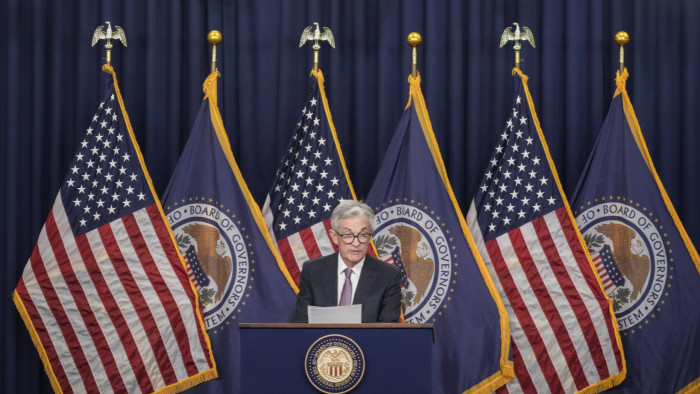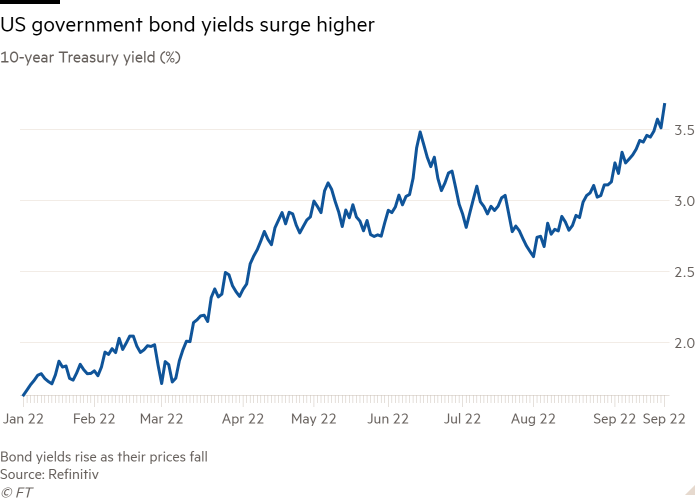Stocks and bond prices slip as more central banks raise rates

Simply sign up to the Equities myFT Digest -- delivered directly to your inbox.
Stocks and government bond prices fell on Thursday as more of the world’s central banks joined the US Federal Reserve in raising interest rates to curb persistently high inflation.
On Wall Street, the S&P 500 share gauge closed down 0.85 per cent, extending declines from the previous session. The Nasdaq Composite, which is stacked full of technology companies that are more sensitive to changes in borrowing costs, lost 1.37 per cent on Thursday. Europe’s Stoxx 600 index closed 1.8 per cent lower.
Those moves in equity markets came after the Fed raised interest rates by 0.75 percentage points on Wednesday, marking the third consecutive increase of such magnitude and taking the central bank’s target range to 3 to 3.25 per cent.
At the same time, a closely watched “dot plot” of US rate-setters’ predictions pointed to further increases and no cuts before the end of this year. The chart reflected expectations of the US benchmark rate rising to 4.4 per cent by the end of 2022 before peaking at 4.6 per cent next year.
The yield on the 10-year US Treasury note, seen as a proxy for global borrowing costs, jumped 0.19 percentage points to 3.7 per cent as the price of the debt instrument fell. The policy-sensitive two-year yield rose 0.12 percentage points to 4.12 per cent.

Other government bonds also came under pressure, with the 10-year UK gilt yield surging 0.19 percentage points to 3.5 per cent and the equivalent German Bund yield adding 0.07 percentage points to 1.97 per cent.
In currencies, the dollar rose 0.54 per cent against a basket of six peers, reversing declines that were fuelled earlier in the session by Japan intervening to prop up the yen for the first time in 24 years.
The greenback’s earlier fall came as the yen rose as much as 2.6 per cent to ¥140.36 against the dollar, after Japan’s top currency official said the government had taken “decisive action” to address a “rapid and one-sided” move in the foreign exchange market. Tokyo last bought US dollars to defend the yen in 1998.
The yen’s ascent marked a sharp reversal from a loss of as much as 1.3 per cent earlier in the session after the Bank of Japan said it would hold its main interest rate at negative levels, widening the gulf between its loose monetary policy and the trend towards jacking up rates demonstrated by other central banks.
Other central banks joined the week’s tightening trend on Thursday, with the Bank of England lifting its key lending rate by 0.5 percentage points to 2.25 per cent and the Swiss National Bank taking borrowing costs up 0.75 percentage points to 0.5 per cent. The decision, framed by analysts at ING as “the end of an era”, marked a shift into positive territory by the SNB for the first time since 2015.
Luke Bartholomew, senior economist at Edinburgh-based asset manager Abrdn, said the UK rate rise “actually looks rather small” when compared with larger increases by other central banks.
“The Bank of England, therefore, continues to look like something of a laggard compared to international peers, which is likely to keep the pound under selling pressure,” he added.
Concerns have intensified in recent months that interest rates will climb around the world to levels that exacerbate an economic downturn as authorities strive to tame rapid price growth.
Comments